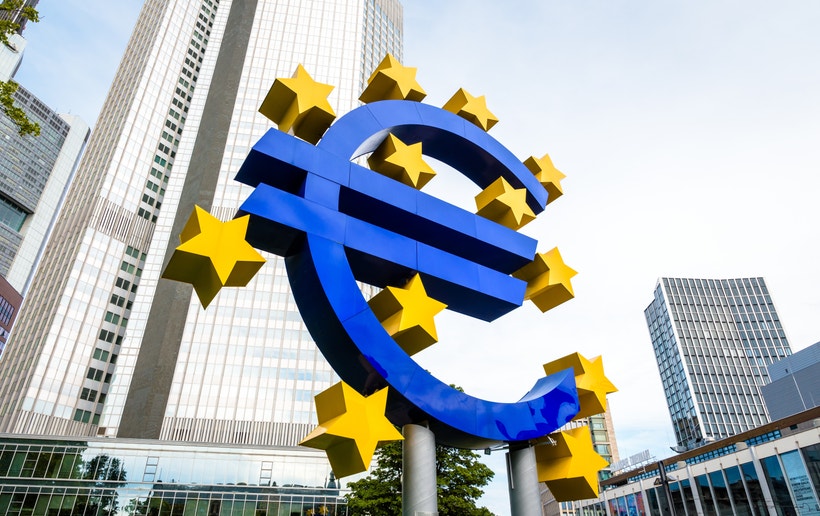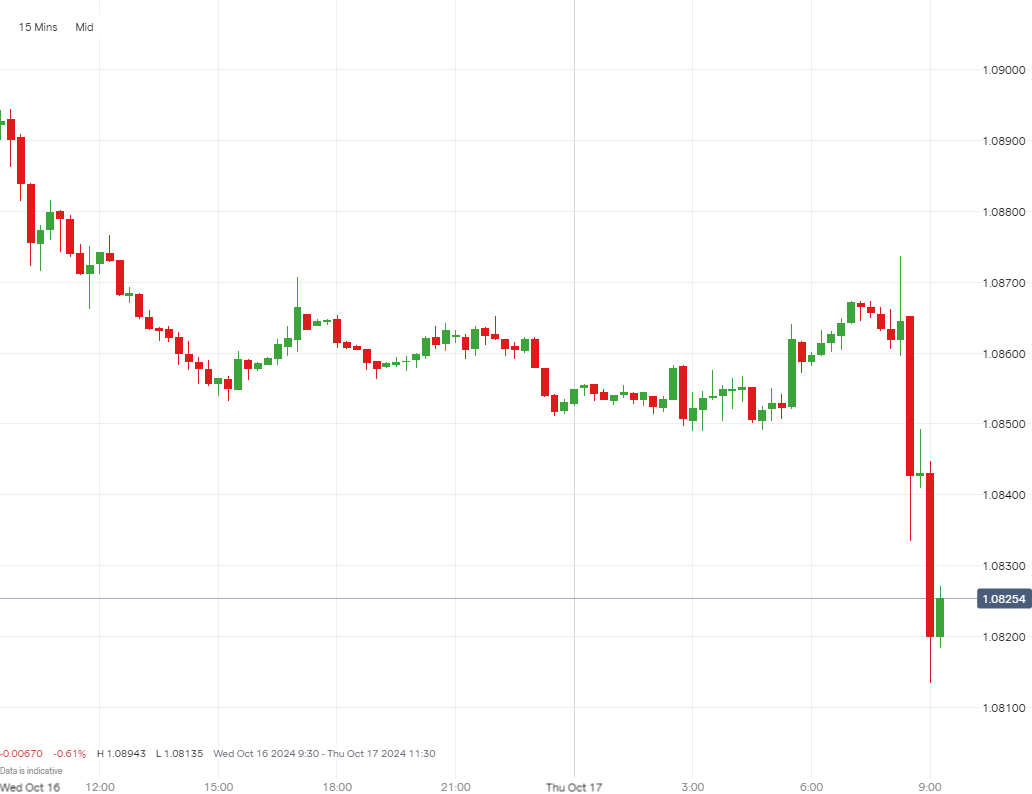EUR/USD on strong downtrend after ECB rate cut announcement
Explore the latest ECB interest rate cuts and their impact on the euro's fall below 1.08500, while the US dollar index rises amid election speculation and strong retail sales data.

Key points
- ECB cuts interest rates by 25 bps for first time in 13 years
- EUR/USD falls below 1.08310, lowest since early August
- US dollar index reaches 103.75 amid election speculation
- US retail sales grow by 0.4% in September, exceeding forecasts
- ECB decisions remain on a "meeting by meeting" basis, adding uncertainty
ECB Follows in Fed Footsteps with Rate Cuts
The European Central Bank (ECB) has cut interest rates back-to-back for the first time in 13 years, with a 25 basis points reduction. ECB president Christine Lagarde emphasized that this decision was unanimous, even without signs of recession despite their dovish stance. This move was anticipated due to inflation assessments, but the ECB has not committed to future rate cuts. Decisions will be made on a "meeting by meeting" basis, stating that the Governing Council will maintain policy rates sufficiently restrictive for as long as necessary. Such a cautious approach mirrors actions by the Federal Reserve, highlighting a strategic alignment in monetary policy.
EUR/USD Accelerates Losses Below 1.08500
Following the ECB's interest rate cut, the euro continued its decline, signaling ongoing bearish sentiment. It dropped to 1.08310, levels not seen since early August, indicating a significant decrease. While rate cuts aim to stimulate economic activity by lowering borrowing costs, they often lead to a weaker currency in forex markets, as investors seek higher returns elsewhere. As the euro tests these lows, market participants will watch for economic data and ECB communications, which could offer clues about future policy actions—highlighting the intricate balance between stimulating economies and maintaining currency value.
EUR/USD price history

US Dollar Index Surges Amid Pre-Election Speculation and Retail Sales Data
The US dollar index remains bullish, reaching 103.75, bolstered by stronger-than-expected retail sales data and political speculation. Retail sales growth exceeded forecasts, rising by 0.4% in September, supporting the idea that rate cuts may slow. Additionally, speculation of a Trump victory in the upcoming election has boosted the dollar, as his policies are viewed as inflationary. Amid these dynamics, traders will closely monitor economic data and political developments to gauge their potential impact on the dollar's future trajectory, illustrating how political and economic factors intertwine in influencing currency strength.
What’s Next for EUR/USD?
The ECB's dovish stance tends to weaken the euro, making it less appealing to yield-seeking investors. The lack of clear future rate cut indications introduces uncertainty, potentially stabilizing the euro short-term but keeping the focus on economic data influencing ECB decisions. Persistent bearish trends, with the euro below 1.08500, suggest further losses could occur without significant economic improvement or if the ECB's dovish policy persists. Conversely, sustained US economic strength or political shifts could enhance the dollar's appeal, providing a complex landscape for traders navigating the EUR/USD pairing, emphasizing the need for keen observation of economic and political signals.
How to trade EUR/USD
- Open an account to get started, or practice on a demo account
- Choose your forex trading platform
- Open, monitor, and close positions on EUR/USD
Trading forex requires an account with a forex provider like tastyfx. Many traders also watch major forex pairs like EUR/USD and USD/JPY for potential opportunities based on economic events such as inflation releases or interest rate decisions. Economic events can produce more volatility for forex pairs, which can mean greater potential profits and losses as risks can increase at these times.
You can help develop your forex trading strategies using resources like tastyfx’s YouTube channel. Our curated playlists can help you stay up to date on current markets and understanding key terms. Once your strategy is developed, you can follow the above steps to opening an account and getting started trading forex.
Your profit or loss is calculated according to your full position size. Leverage will magnify both your profits and losses. It’s important to manage your risks carefully as losses can exceed your deposit. Ensure you understand the risks and benefits associated with trading leveraged products before you start trading with them. Trade using money you’re comfortable losing. Past performance is not indicative of future results.
